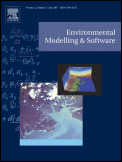Exploding the myths: An introduction to artificial neural networks for prediction and forecasting
Abstract
Artificial Neural Networks (ANNs), sometimes also called models for deep learning, are used extensively for the prediction of a range of environmental variables. While the potential of ANNs is unquestioned, they are surrounded by an air of mystery and intrigue, leading to a lack of understanding of their inner workings. This has led to the perpetuation of a number of myths, resulting in the misconception that applying ANNs primarily involves “throwing” a large amount of data at “black-box” software packages. While this is a convenient way to side-step the principles applied to the development of other types of models, this comes at significant cost in terms of the usefulness of the resulting models. To address these issues, this inroductory overview paper explodes a number of the common myths surrounding the use of ANNs and outlines state-of-the-art approaches to developing ANNs that enable them to be applied with confidence in practice.
Download full text in pdf format
 Published as:
Published as:
H.R. Maier,
S. Galelli,
S. Razavi,
A. Castelletti,
A. Rizzoli,
I. N Athanasiadis,
M. Sànchez-Marrè,
M. Acutis,
W. Wu,
G.B. Humphrey,
Exploding the myths: An introduction to artificial neural networks for prediction and forecasting,
Environmental Modelling & Software, 167:105776,
2023, doi:10.1016/j.envsoft.2023.105776.
Highlights
- Commonly held myths about artificial neural network (ANN) modelling are articulated and busted.
- Good modelling practices applied to other types of predictive models are also applicable to ANNs.
- State-of-the-art approaches to developing ANN models for prediction and forecasting are presented.
- Size matters – ANNs with more inputs and hidden nodes are more likely to give non-sensical results.
- Using an independent validation set is insufficient to ensure ANNs can be used with confidence in practice.
You might also enjoy (View all publications)
- CY-Bench: A comprehensive benchmark dataset for sub-national crop yield forecasting
- Hybrid phenology modeling for predicting temperature effects on tree dormancy
- To measure or not: A cost-sensitive, selective measuring environment for agricultural management decisions with reinforcement learning
